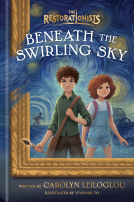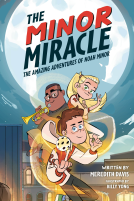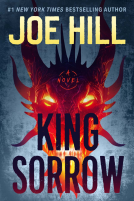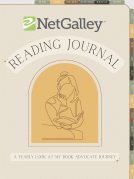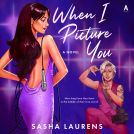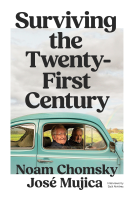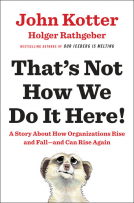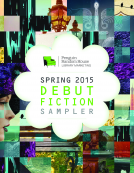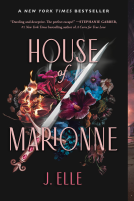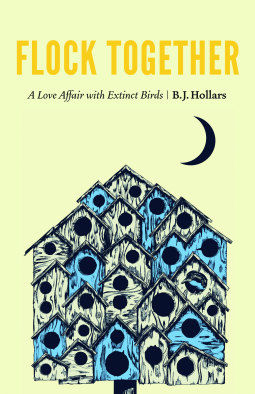
Flock Together
A Love Affair with Extinct Birds
by B.J. Hollars
This title was previously available on NetGalley and is now archived.
Send NetGalley books directly to your Kindle or Kindle app
1
To read on a Kindle or Kindle app, please add kindle@netgalley.com as an approved email address to receive files in your Amazon account. Click here for step-by-step instructions.
2
Also find your Kindle email address within your Amazon account, and enter it here.
Pub Date Feb 01 2017 | Archive Date Jan 19 2017
Description
After stumbling upon a book of photographs depicting extinct animals, B.J. Hollars became fascinated by the creatures that are no longer with us; specifically, extinct North American birds.
How, he wondered, could we preserve so beautifully on film what we've failed to preserve in life?
And so begins his yearlong journey to find out, one that leads him from bogs to art museums, from archives to Christmas Counts, until he at last comes as close to extinct birds as he ever will during a behind-the-scenes visit at the Chicago Field Museum.
Heartbroken by the birds we've lost, Hollars takes refuge in those that remain. Armed with binoculars, a field guide, and knowledgeable friends, he begins his transition from budding birder to environmentally conscious citizen, a first step on a longer journey toward understanding the true tragedy of a bird's song silenced forever.
Told with charm and wit, Flock Together is a remarkable memoir that shows how “knowing” the natural world—even just a small part—illuminates what it means to be a global citizen and how only by embracing our ecological responsibilities do we ever become fully human. A moving elegy to birds we've lost, Hollars's exploration of what we can learn from extinct species will resonate in the minds of readers long beyond the final page.
Advance Praise
“This book should appeal to anyone with a curiosity about the world of nature. The topics, writing, and appealing voice of the author make this volume a most engaging read.”—Joel Greenberg, author of A Feathered River Across the Sky: The Passenger Pigeon's Flight to Extinction
“Flock Together is the highly satisfying tale of a fledgling birder. Hollars conveys an infectious sense of awe and excitement for every bird he spots. Yet this is so much more than just a catalog of sightings. It is also about the author’s entry into a community of intriguing characters—some brilliant, some eccentric, yet all bound by their fierce love for birds.”—Justin Hocking, author of The Great Floodgates of the Wonderworld?
Available Editions
| EDITION | Hardcover |
| ISBN | 9780803296428 |
| PRICE | $24.95 (USD) |
Links
Average rating from 23 members
Featured Reviews
 Laura H, Reviewer
Laura H, Reviewer
This book was very beautifully written. I am normally not one to read non fiction but this book pulled me in from page one. The author has a very poetic pen and kept the book alive. This book brings in noteworthy characters and a love of birds for all. As the author discovers each new bird and place, you can't help but feel emotionally tied in. This book was perfect from start to end and I recommend it to all!
 David W, Media/Journalist
David W, Media/Journalist
Birders are passionate. They are iconoclasts, maybe even anarchists. They may record every detail of every sighting they make, in endless volumes of journal entries and spreadsheets that mean nothing to anyone else, including other birders. They spend Christmas counting birds. They live for the chirp. This is the world Hollars is entering.
My wife and I consider ourselves on the edge of this precipice. We have a buffet out back that is the trough for about 20 species, more than most can even name, according to Flocking Together. When I lived in Quebec, I identified 49 of the 51 native birds over the years. So there is some kinship here.
The book is about two things: extinct species in the USA, and Wisconsin birders. It is perverse that Hollars discovers people who have seen endlings – the last living example of a bird now extinct. These people are minor celebrities to him. There are lots of endlings, more every year. It is nothing to be proud of. Especially if you shot and stuffed the last one, which was the pride of conservationists until about 70 years ago.
One thing birders have in common is obsession. It takes them over. Hollars is driven to get up to date on Wisconsin birders going back 150 years, seeking their cabins, examining their stuffed specimens, and linking them to the others in the obsessive community.
Sadly, it’s all that superficial. He never probes the state of the disaster. Hollars doesn’t get into what birds face extinction; he only seems interested in birds that are no more. He touches on the fact that ordinary house cats kill 2.4 billion birds a year in the USA. But he doesn’t relate it to the fact there are 70 million cats – way out of proportion to their place in the ecological scheme – simply because there are way too many of us. So it’s no use saying we are not responsible for all the factors in extinctions. Really, we are.
Flock Together is a nice little research source for someone starting out birding. Know what you’re getting into.
David Wineberg
Ostensibly just another in a long list of recent books about extinction, Flock Together is a refreshingly original take on the genre. Hollars is drawn to birdwatching by an obsession with notable extinct birds such as the ivory-billed woodpecker. His relative newbie status as a birder makes him an engaging, down-to-earth host, adding just the right amount of levity to nicely written reflections on our interaction with the natural world through the lens of extinct birds. If there’s fault to find, Flock Together is sometimes a bit rambling, with the connections between chapters sometimes hard to follow. Nonetheless, there’s plenty to enjoy here for novice and expert ornithologists alike.
 Reviewer 169557
Reviewer 169557
Flock Together is B.J. Hollars' account of how he became enamored with birds and extinct birds, and became a birder himself. In this regard, the book provides ample material for the beginner birder with important American names in the conservation movement, local Wisconsin resources, a good bibliography, as well as many stories of the anxieties and insecurities of a beginner birder.
The scope of the book is regional, rarely reaching national (with mentions of national, if not international icons in conservation history, such as Aldo Leopold). This is not a huge problem, though, as Wisconsin does have a lot to offer in terms of bird diversity and habitat and a slew of experts, museums, collections, and legends like the aforementioned Aldo Leopold.
Mostly, Hollars is obsessed not only with his new-found hobby of watching birds, but also with the long-term, mostly epistolary relationship of two men, one a hermit citizen scientist named Ziller and the other, one of Leopold's students, a passenger pigeon expert, called Schroger. A substantial part of the book is spent discussing their relationship and correspondence, tracking down the goshawk Ziller shot and gifted Schroger, tracking down Ziller's hut in the wilderness... In a longer book, this relationship certainly offers a unique opportunity to understand not only bird conservation and environmentalism in America, but also the scholars and citizens who were/are dedicated to birds, as well as the changes in attitude towards nature and wildlife from shoot-and-study to list-and-count. However, in such a short book, the relationship perhaps takes too much space. Still, the author's own enthusiasm about the lives of the two men is captivating. And that Hollars brings lost names like Ziller to the forefront is valuable.
There is, though, one thing that would improve the book immensely: at times, details that do not pertain at all to the subject matter are included in ways that don't really add anything, not even respite to collect thoughts, for example what the author and his companions ordered to eat somewhere. At other times, conversations are rendered in dialog format without, it seems, any stylized shortening to get to the gist, which serves no purpose other than take up space.
Instead, some other things could have been explored, such as the greater history of conservation in the US, or the relationship of American birding to, say, the practice in the UK (for, Americans did not invent birding, hunting, etc.) There is certainly a big cultural difference: where Hollars experiences almost all his birding by driving around in big, gas-guzzling cars, the serious British birders take a less intrusive approach (perhaps also aided by the fact that the public paths allow anyone to walk through anyone else's land...)
Overall, Flock Together is a well written book about the beginnings of one man's interest in birds and their habitats. It is difficult to see where it would fit, though: the amateur birder can certainly benefit from a good guide and how-to book more, and those seeking information about conservation of birds (or extinction of birds, for that matter) could benefit more from book like Rare Bird by Maria Mudd Ruth that focus on one story, one bird, and examine nearly all the players that make that story complete.
Recommended to those who like woodpeckers, auks, goshawks, Sesame Street, and rabbits.
Thanks to NetGalley and University of Nebraska Press for a free digital copy of the book in exchange of my review.
 Mollie G, Reviewer
Mollie G, Reviewer
Reading nonfiction is often an opportunity to demonstrate my ability to persevere...or to put it differently, to read while yawning.
Because of that, I hid this book at the back of my to-be-read list. But it did not go extinct and so, on a rainy day I succumbed.
Like the author, who prior to embarking on his research, did not notice the bird life around him, I had missed reading a remarkable book.
As a beginning birder myself, I identified with his journey...the frustration of being profoundly uniformed offset by the joy of actually seeing and learning about birds. In the end, becoming captivated by wild creatures.
The sorrow born of the death of species is very real as he recounts his journey. It seemed to me that he neared the edge but did not topple over it...and thus escaped the trap of being preachy or blaming. But the impact of extinctions was clear.
The autobiography of a young birder, the biographies of men influential in the ecology movement and the stories of extinct birds join in a masterful and heartfelt book.
I gladly join the author's flock.
 Harriet S, Librarian
Harriet S, Librarian
While I'm not a birder, I found this account of a birder's ongoing quest to be quite interesting and enlightening.
 Diane P, Educator
Diane P, Educator
I will probably recommend my creative nonfiction students to read this book because Hollars has an entertaining way of writing about birds. There were portions of the book that would have received 5 stars, especially when he was being quite witty about the birds, but other times the pace slowed down a bit too much.
 Educator 144982
Educator 144982
A wonderful natural history full of surprising and endearing information. Should be required reading for anyone with the power to harm the environment.
 Librarian 299542
Librarian 299542
This is a lovely book about one man's quest to learn all that he could learn about extinct birds. What struck me about this memoir was that, unlike me, Hollars was not fascinated by birds. In the book he tells us how he fell in love with the species and how this led him to want to know more about birds, particularly the ones that are no longer here.
 Bill C, Reviewer
Bill C, Reviewer
I confess that B.J. Hollars Flock Together: A Love Affair with Extinct Birds was not what I expected. I thought I was going to be getting a book that looked in depth and more than a little scientifically at the evolution of birds from dinosaurs such as Confuciusornis or Hesperonis. Certainly, the “love affair” should have tipped me off that this would be a more personal examination rather than a more objective, scientific one. And it’s true that the scope of the book is much more narrow than I’d expected in terms of both time (covering only a few centuries, and mostly the past 150 years) and geography (heavily focused on Wisconsin). But I also ended up with a much more charming, engaging story than I’d expected, which I consider a win.
“Once upon a time there lived a bird and then that bird stopped living.” Thus begins Hollars' odyssey into bird watching, early-20th century naturalists, conservationism, and recent bird extinctions, including in particular the passenger pigeon and the ivory-billed woodpecker. His journey brings him to the Chicago Field Museum, the early-morning back roads cold of a “Christmas Count,” and into the Wisconsin bog in search of the foundation of an old cabin. This is the general structure of the book—one major thread focusing on the ivory-billed woodpecker, one on the 20th century Wisconsin amateur naturalist Francis Zirrer, and one on his foray into bird watching. Hollars makes a few small side journeys, say into discussing the passenger pigeon, but those three elements make up the bulk of “Flock Together.”
The entry into the book is the ivory-billed woodpecker (also known as “The Lord God bird”), that bird that lived then “stopped living,” in the opening s sentence, one thought extinct, then for a short while thought to be rediscovered, and then, all too sadly, considered extinct once more. This for him is his “spark bird”—the “one that — through its beauty or grace or other intangible quality — ‘sparks’ one’s lifetime interest in birds.” The sections on the extinct birds—the woodpecker, the passenger pigeon— are informative and sorrowful, but luckily the sections detailing Hollars’ own beginning moves into bird watching leaven the sorrow and sense of impending catastrophe and offer up the most charming moments. Hollars voice in these segments is engagingly honest and self-deprecating, as for instance when a more experienced birder gives him a run-down of species she’d seen at a recent count and he, “nod [s] knowingly (or at least in a manner that gives the impression that I’m familiar with the species she’s rattling off).” Or when someone asks if he’s heard about a particular bird and he tells us, “Of course I haven’t, though I take a moment to pretend to mull it over.”
The focus on Wisconsin was, as I said, a bit more narrow than expected, and despite Hollars’ engaging voice, I still would have preferred a bit wider, deeper focus at times. But thanks to that voice, a good sense of historical detail, and some at times moving reflections on the loss of biodiversity—past and pending—Flock Together is an easy book to recommend to those interested in birds, birding, conservation, or just—or perhaps most importantly—the world around us.
While we have dabbled in studying birds and can name and identify quite a few by sight or call Flock Together: A Love Affair with Extinct Birds is the story of a quest to find an Ivory Billed Woodpecker. This is a whole new level of birding. It wasn't as quirky as I would have guessed. On the other hand, most people don't traverse the Midwest in search of a bird. The story chronicles his year-long quest and includes a trip to the Field Museum.
This is a detailed account that naturalists (especially birders) will love and relate to. I can see this book being one that you could hand a high school student studying natural history.
The author is an expert, but he includes plenty of information that would be useful to a beginner including stories of his own mistakes, exact good birding spots (if you are lucky enough to be near Wisconsin/ Illinois) and a bibliography that would be useful no matter where you live.
 Susan M, Reviewer
Susan M, Reviewer
The author became fascinated with birds when there was a possible rediscovery of the ivory-billed woodpecker. It was thought extinct due to hunting. Through interviews with bird experts (ornithologists) and books on this woodpecker he became fascinated with Nort American birds especially the ones that are extinct. He examined the early methods that were used to study birds. He describes the birds and their environments. He includes historical research in each chapter. I found myself worrying about birds that are still alive but on the endangered list. This is an excellent memoir on his quest to know living birds through his study of extinct birds.
 Bonnye Reed F, Reviewer
Bonnye Reed F, Reviewer
I received a free electronic copy of this informative memoir from Netgalley, B. J. Hollars and University of Nebraska Press in exchange for an honest review. Thank you all, for sharing your hard work with me.
I love that B. J. Hollars is a beginning bird nut - so many of us can relate to that sense of feeling left out of the conversation, the information, the love that is associated with everyone's favorite bird species. We all start that way. Hollars quickly picks up the baton (and the lingo) of experienced birders, however his favorite bird is, and is always going to be, the ivory billed woodpecker, long extinct. As are the Passenger Pigeon. The Carolina Parakeet. The Dodo, the Labrador Duck and the Goshawk. But he also brings to us the success stories - the California Condor, the Sandhill Crane.
And as he shares his quest for more information, more photos, more art of these awesome but no more birds, these 'endlings', he shares too the knowledge of many conservationists along the way - Frank Chapman, James Tanner, Aldo Leopold, Bill Schorger, Francis Zirrer, Don Eckelberry, and Steve Betchkal, to name a few. And he gives us an introduction and insight into many museums in the east, Including the Field, and the curators that make them an easily usable resource for all conservationists, professional and amateur alike.
And I will find a local Christmas Count to join before next winter rolls around. I'll bet you will, too.
 Reviewer 68310
Reviewer 68310
Flock Together had its charms- there's some good reflection on extinction in our world here though wrapped up in an anxiety. The imposter syndrome was a bit strong for someone writing a memoir but I found all the information interesting.
 Librarian 105878
Librarian 105878
As the son and brother of avid bird watchers and a weekend watcher myself, this sounded like a really interesting book. A variation on the bird-watching theme ... a search for ... or a 'love affair with' extinct birds sounded like a really fascinating take on the bird-watching craze. The appeal is part bird-watching, of course, but there's also the historical and paleonotological aspects.
Author Hollars does a nice job of bringing the extinct birds to life (so to speak), but rather than a love affair with extinct birds, as the sub-title states, Hollars focuses in on just a couple and really, he might have made a better case for a book about his obsession with the Ivory-Billed Woodpecker.
But one thing that we don't really get is why Hollars has developed this fascination. He admits at the very beginning that he's not a bird watcher. This is disappointing because we've been led to think we're getting a story from a bird watcher with words such as 'flock together,' 'love affair,' and 'birds' in the title. But the key word is 'extinct.'
It seems like we shouldn't dislike the book for what it's not, but for the millions of people who enjoy bird-watching, and hence preserving the existing birds for future generations to enjoy, a tale about the extinction of specific species ... <em>from someone who hasn't developed the same appreciation for the living birds</em> ... feels so hypocritical. What experiences have you had that suggest you can now lecture to those who have spent years tracking and searching and enjoying rare birds?
When Hollars decides to focus on his obsession with the Ivory-Billed Woodpecker the book becomes clearer and the bird watchers who are reading can begin to understand and see the change in a non-bird-watcher to becoming a fan of birds. It's a different path than most take, but the similarities are there.
Hollars writes, when he finally holds a stuffed Ivory-Billed from a museum of natural history:
<blockquote>Holding that bird, I’m faced with a complicated feeling—part joy, part grief, part something bordering on the sublime. And it’s my inability to give it a proper name that makes the emotion even more powerful. This is my moment of quiet reckoning, my real-life anagnorisis.
<em>I’m in love with a bird</em>, I realize as the camera clicks. <em>But I’m also mourning the bird that I love. </em>
And this isn’t just any bird, mind you, but a bird—like so many others—with a backstory. According to the tag wrapped round his leg, this particular specimen was killed on March 13, 1883 near the Wekiva River in central Florida.*</blockquote>
And this, is what Hollars has been leading us to. That moment of discovery that there is something special about birds. For Hollars it comes with a bird that it is extinct. For others it might come with the first time they see an Oriole, or the Calliope Hummingbird or some exotic, lost traveler. But every birder recognizes the moment.
And while there was a fair amount that was interesting here, the over-all impact of this book doesn't live up to what the title and synopsis suggest.
Looking for a good book? <em>Flock Together</em> by B. J. Hollars wants to be a about a love affair with extinct birds, but it doesn't quite manage to get there, though moments of the book shine brightly.
I received a digital copy of this book from the publisher, through Netgalley, in exchange for an honest review.
*Quote taken from an advance reader copy and may not reflect the final, printed book.
Readers who liked this book also liked:
Noam Chomsky; José Mujica; Saúl Alvídrez
Essays & Collections, Multicultural Interest, Politics & Current Affairs
John Kotter; Holger Rathgeber
Business, Leadership, Finance, Nonfiction (Adult)
We Are Bookish
General Fiction (Adult), Romance, Women's Fiction


